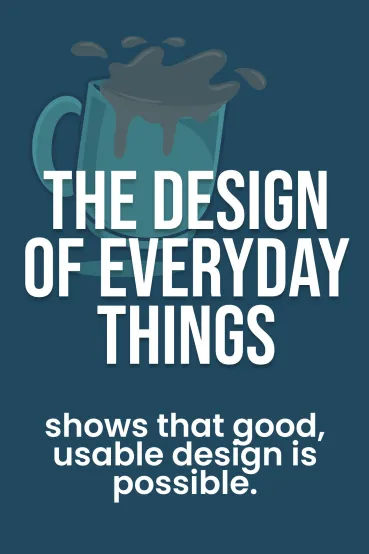
The Design of Everyday Things
Brief Summary
“The Design of Everyday Things” is a thought-provoking book that delves into the often-overlooked world of design. Authored by renowned cognitive scientist Don Norman, the book explores how the design of everyday objects profoundly impacts our interactions, experiences, and even our frustrations.
Key points
Key idea 1 of 9
Setting up a new gadget can be a daunting task, especially if it's a complex one like a washing machine or an air conditioner. Often, people blame themselves, assuming they are at fault. In reality, the true culprit is often poor design.
Neglecting the relationship between users and technology is a key factor that leads to bad design. In contrast, good design aims to bridge the gap between technology and people. Let's consider a digital camera developed to capture high-quality photos and videos. In an effort to provide advanced features, designers often overcrowd the camera's interface with a multitude of buttons and menus. As a result, users may find it overwhelming to navigate the complex array of options and settings. Despite feeling inadequate, users should recognize that the issue lies in the failed design. It just doesn't strike a balance between functionality and user-friendly operation. This hinders the seamless integration of the photographer and the camera technology.
The rapid development of technology in the modern world is the fundamental cause of bad design. Cars, for example, have changed a lot in recent years. They used to be basic machines that only moved people from one place to another. Now, they are advanced vehicles with many features that make driving easier and more fun. In addition to steering and going, cars now come equipped with entertainment systems, GPS navigation, and safety features that have revolutionized the way we drive today. Although helpful and enjoyable, these advancements can also increase complexity.
Technology has been rapidly evolving over the past few years, with new innovations and breakthroughs emerging every day. That's why designers have to stay on top of things and keep their designs up-to-date with the latest advances. However, they also need to ensure that their designs remain user-friendly.
FAQ
You may also like these summaries











